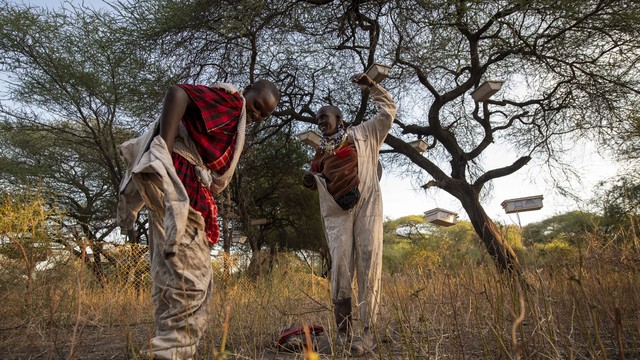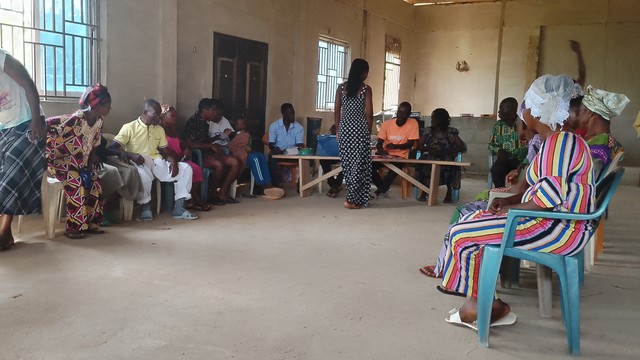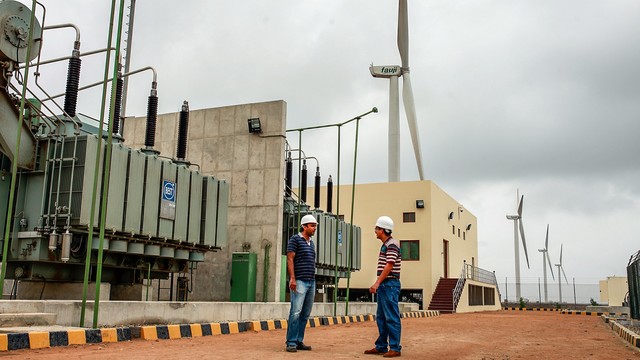Calling all energy and agriculture experts: meet, talk and collaborate
Many of the 500 million small farms that produce the bulk of food consumed in developing countries have no access to modern energy services. Why doesn't more research and innovation focus on getting energy to them?


Renewable energy has a place to play in providing energy access to small farms (Photo via Google reuse rights)
Recent reports on the links between food, energy and water have different, sometimes conflicting, messages. Some say we need to rapidly scale up energy supply to rural areas, while others get fired up about the potential and risks of bioenergy. And everyone's getting excited about new technologies and services for poor households, from gravity-powered lights, to pay-as-you-go solar home systems and wind turbines that seem to make water from thin air.
These success stories deserve every headline –cheap renewable lighting products can mean less kerosene, lower energy bills, the opportunity for children to study at night and healthier lungs. But despite the promise of these new technologies, the energy needs of smallholder farmers —those two billion people who produce up to 80 per cent of all food consumed in a large part of the developing world – have been neglected.
Sarah Best, a senior researcher at IIED, digs deeper into this unturned ground in her latest research paper. Why isn't there more research, innovation and investment around getting energy to these smallholders, she asks, especially as improving food security is so high on everyone's agenda?
Farmers and rural enterprises that supply and source from farms need energy to power tractors and other machinery, to irrigate, store and process crops, and transport them to market. It's virtually impossible to quantify energy gaps in smallholder-based food systems, but the headline statistics hint at the scale of the problem. In sub-Saharan Africa, 89 per cent of people living in rural areas lack access to electricity and just four per cent of crop land is irrigated. The importance of finding context-appropriate energy solutions for these food producers can't be overlooked.
What's more, a farm system has the potential to generate its own energy supply. For example, a system making fuel from agricultural waste or using solar energy to power water pumps. With the appropriate funding, know-how and infrastructure, farmers can also sell the energy they produce to boost their incomes.
Meeting energy needs is about both the supply and, importantly, the equipment that makes it useful — such as a mill, a grain dryer or a tractor. Even energy to power a radio or mobile phone could count as they allow farmers to receive weather updates, hear the latest market prices, and learn what seeds to buy when. Energy that boosts income and wellbeing in this way is referred to in the rural development arena as 'energy for productive uses' — and this is the focus of Best's paper.
Energy planners traditionally emphasise increasing supply rather than understanding demand, while agricultural experts focus on the whole farm as a system — energy is simply one element among many. Best says a more integrated approach between the energy and agricultural sectors could benefit smallholders. "At an individual or farm level, people don't think in silos. But at higher levels and between different stakeholders, it gets more complex and contested."
The history of unsustainable agricultural development in North America, Europe, and in parts of Asia and Latin America also sets a difficult precedent. Increases in food production in these places went hand-in-hand with increases in fossil fuels, fertilisers (which require lots of energy to produce) and mechanisation — not an ideal combination for today's rapidly changing climate and tired soils. Low-income farmers already struggle to pay for the little energy and fertiliser they use, while poor consumers are being hit hard by rising food prices.
But this could be an advantage — small-scale farmers aren't yet locked into intensive fossil fuel use, so there are opportunities for innovation. That's why, says Best, there's never been a better time to ask basic questions around why, what and how we go about addressing the energy needs of smallholders. New award schemes from USAID and the Ashden Awards promoting clean energy solutions in agriculture are a welcome sign that others in the development sector recognise the importance of the issue.
We know that there is no blueprint or 'wonder-technology' for supplying energy to smallholders. Their energy needs are diverse — so solutions must be diverse too. Women make up around 43 per cent of the farming workforce in developing countries, and tend to have less access than men to mechanical equipment. So, assessing their energy needs is particularly important.
Thankfully we are not starting from scratch. Best's paper highlights there is already good experience out there on what's gone wrong in the past, the different technical options – from rural electrification to sustainable agricultural practices – and potential success factors to ensure solutions are affordable, maintained over time and boost incomes.
Modern energy services are not always the answer. For example, the cost of purchasing and running new equipment may outweigh the benefits. In some cases, farmers may prefer manual labour or animal power. Success stories are often cheap, simple technologies like human powered treadle pumps used for irrigation, which avoid the need for power sources altogether.
But we still have many questions that need answers:
- Which types of farmers would benefit from access to modern energy services in order to generate income and improve food security? When?
- Are there examples of the different types of delivery models for providing energy and equipment that stimulate productive activities at scale?
- What are the impacts of energy use on farmer livelihoods?
- What is required to make joined-up approaches between sectors work at a local and national scale?
- The private sector is often reluctant to invest in low-income energy markets or smallholder farming due to fears of high risks and low returns. What do we know about the role of the private sector here?
- Knowledge and capacity-building to build 'energy literacy' among local people is critical but time consuming. What can we learn from farmers' organisations about the best way to do that?
To design energy solutions for smallholders that are effective, long-lasting, and work for local communities, we need to start answering some of these questions. We aren't going to do that in silos. Energy and agriculture experts will have to sit around the same table if we want to achieve the broader goals of food security, climate change mitigation and improved livelihoods for all.
Rebecca Trevalyan is a Forum for the Future Masters Student. She wrote this post during an internship at IIED (r.trevalyan@forumforthefuture.org).
Download Sarah Best's paper or email her for more information (sarah.best@iied.org).


